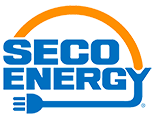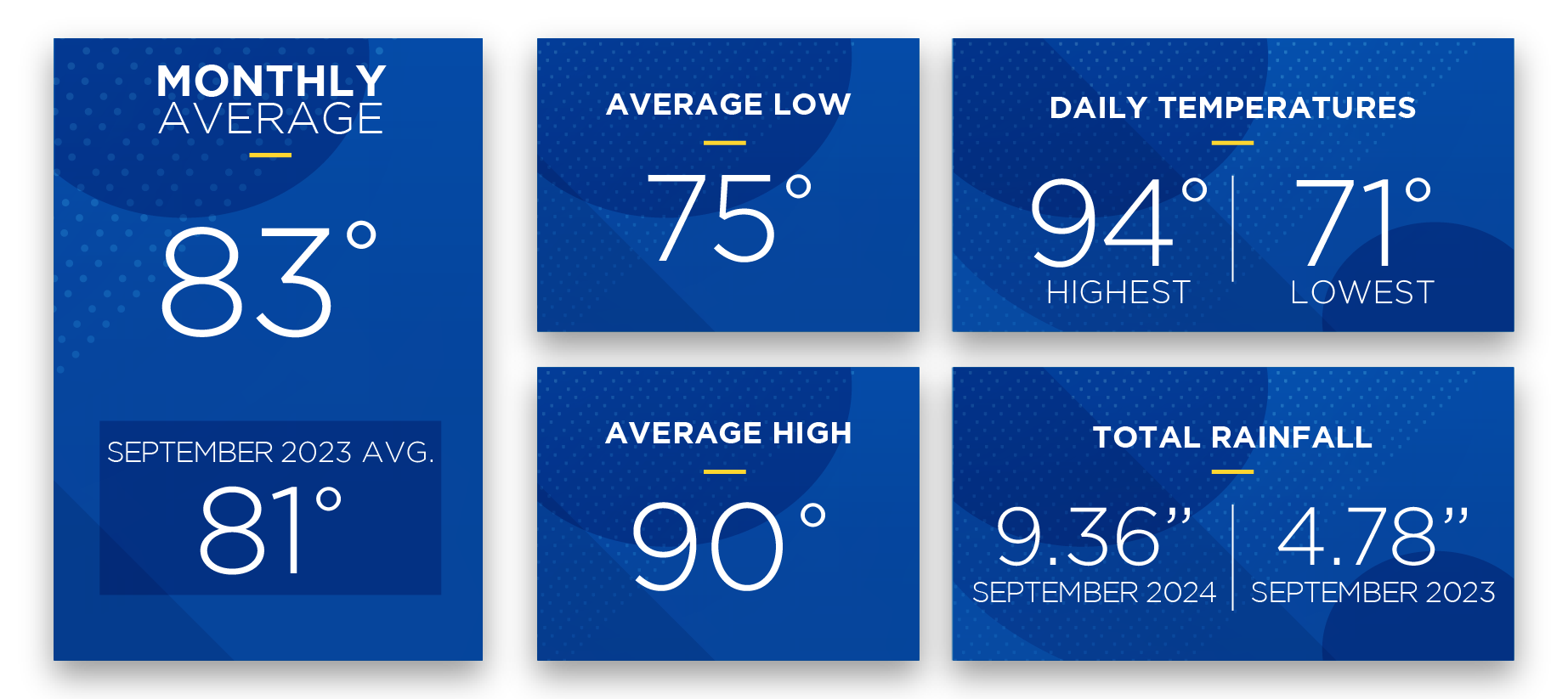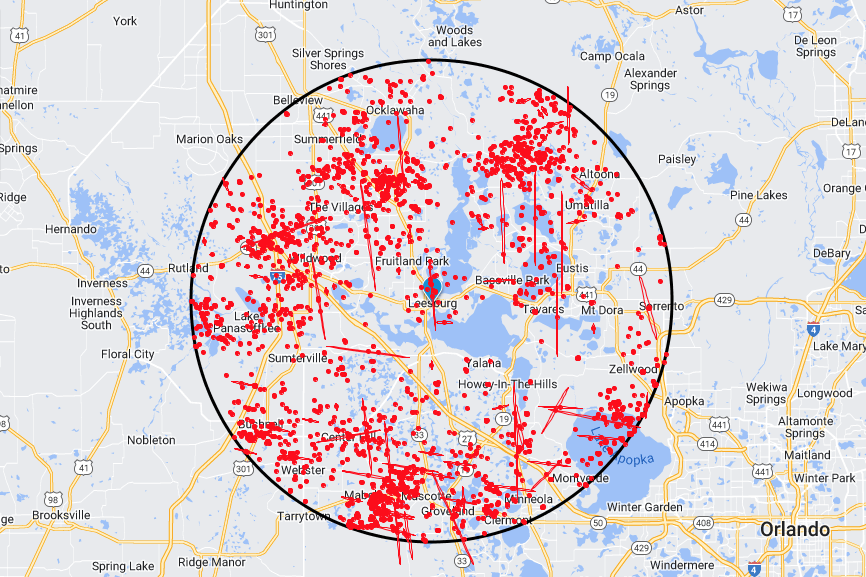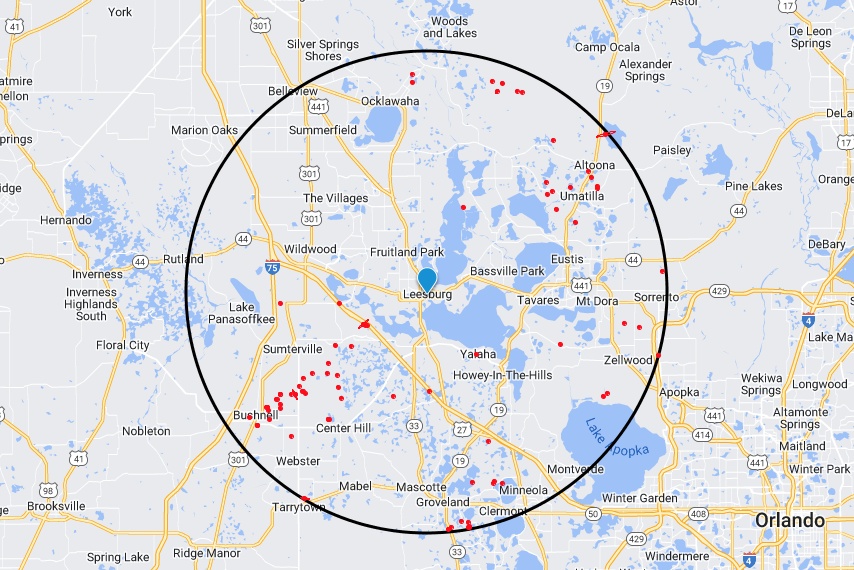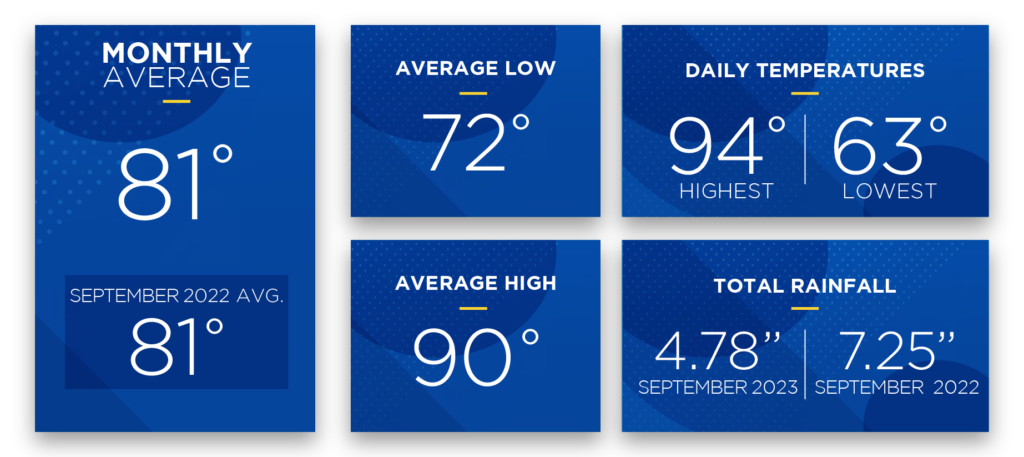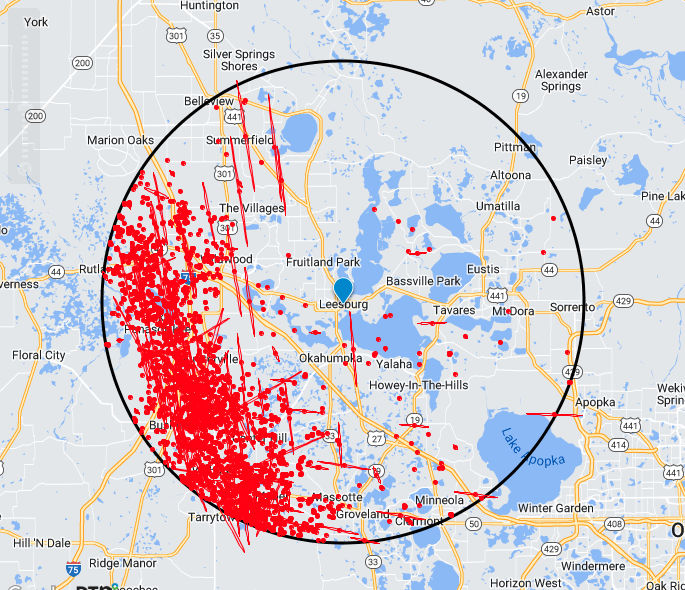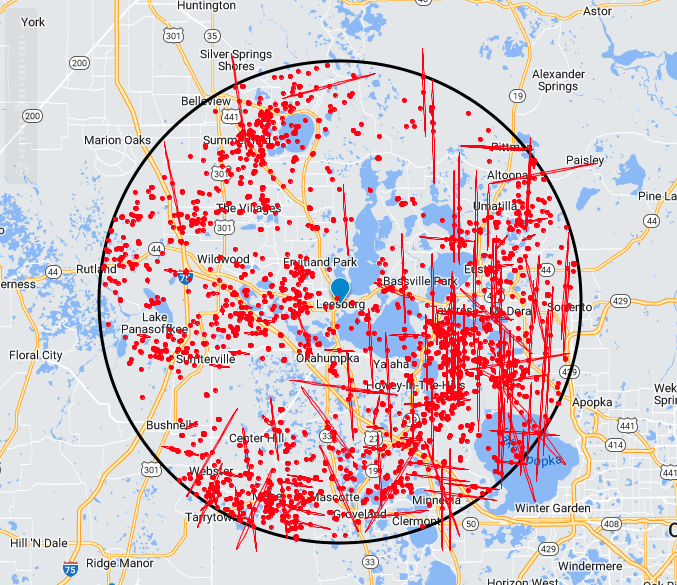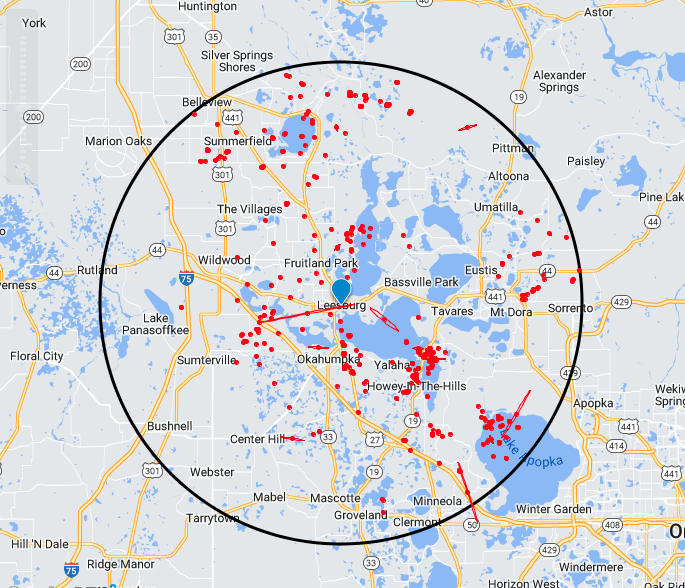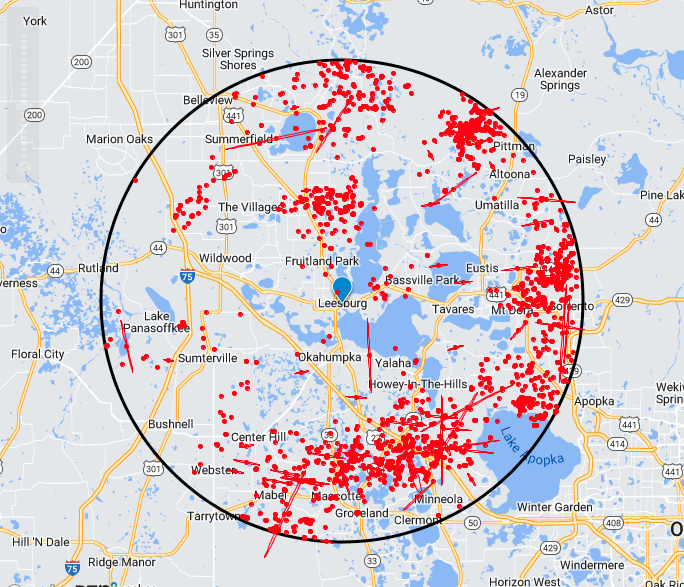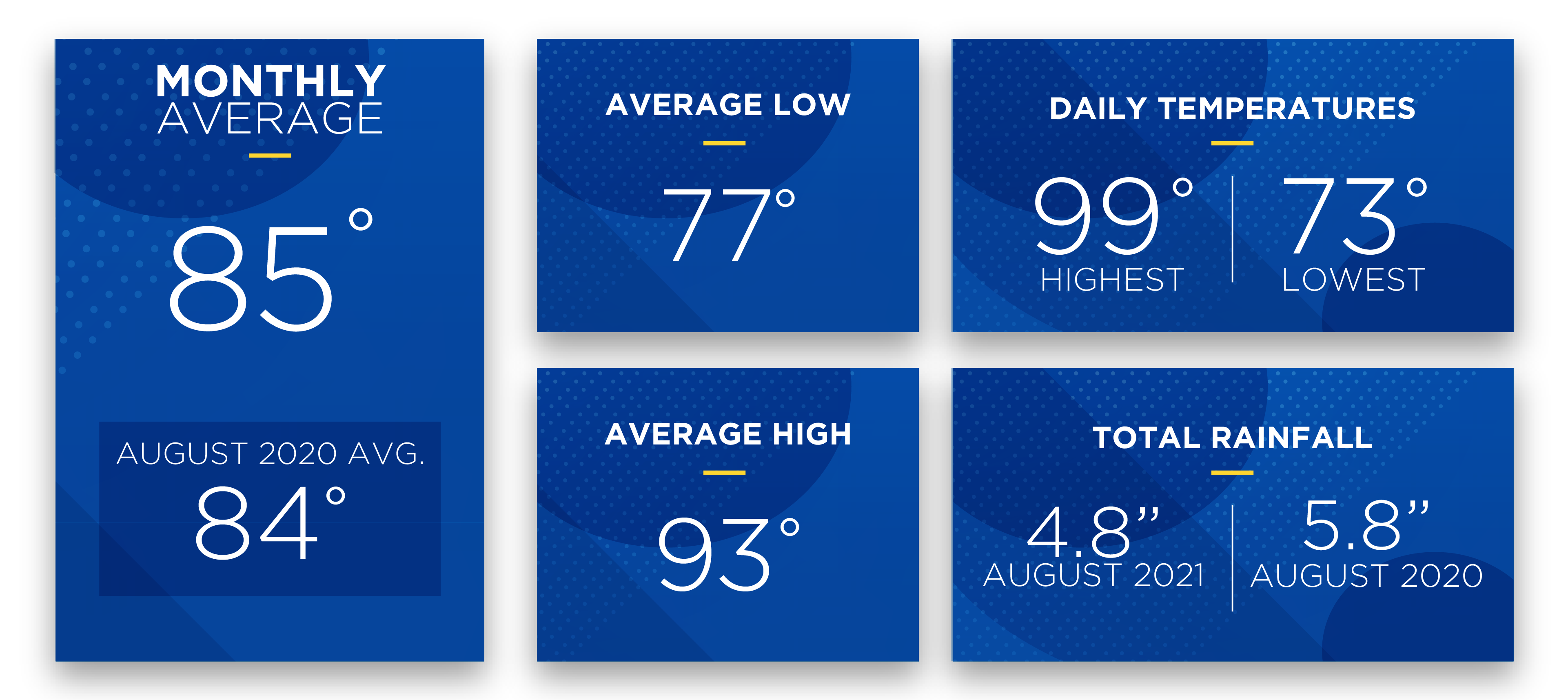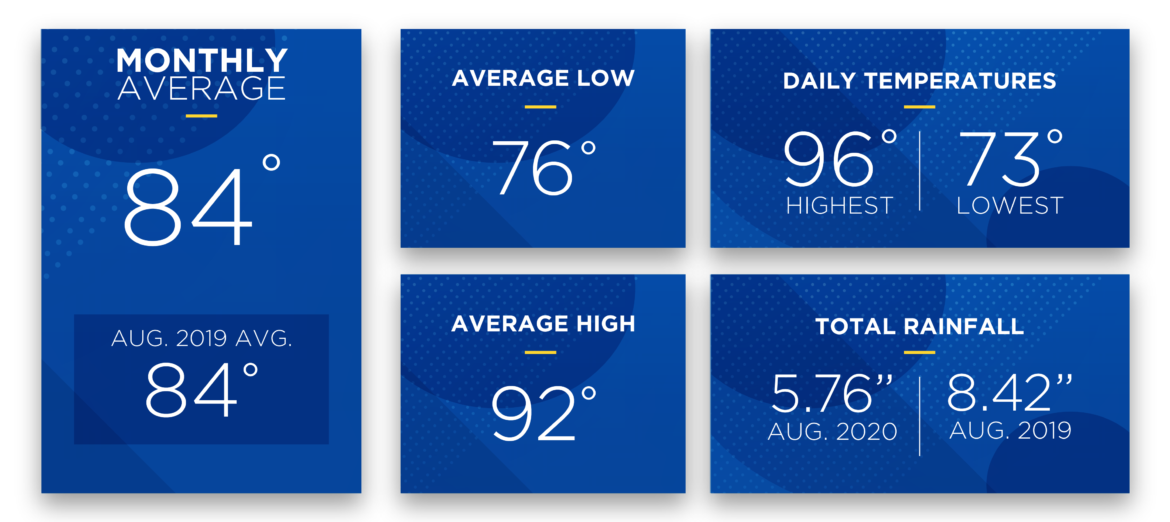September 2024 Sunshine State Stats
In September 2024, the monthly average temperature fell by 1 degree from the previous month, while the rainfall total recorded at Leesburg International Airport (KLEE) increased by 2.2 inches. The month’s average high temperature was 90 degrees, lower than the August average high temperature by 2 degrees. The average low was 75 degrees, just 1 degree lower than in August. The month’s highest temperature reached 94 degrees on September 1 and 18, and the lowest temperature of 71 degrees occurred on September 22.
Reported rainfall in September totaled 9.36 inches, 3.6 inches more than “normal,” as stated by WeatherSentry. Measurable rainfall occurred on 16 days, with the 3-day period of September 3, 4, and 5 amounting to 3.88 inches, over one-third of the monthly total. During the three days surrounding Hurricane Helene (9/25 – 27), rainfall totaled only 1.03 inches.
Thunderstorm activity within a 20-mile radius of Leesburg International Airport decreased by 57% from August. WeatherSentry detected 3,023 cloud-to-ground strikes in September compared to 7,074 in August. Lightning was most active during the first two weeks of September.
Lightning Archive Report – 20-mile radius from Leesburg International Airport (KLEE)
Data and charts provided by weathersentry.dtn.com
Cloud to Ground Lightning – September 1-15, 2024 (2937 strikes)
Cloud to Ground Lightning – September 16-30, 2024 (86 strikes)
Historically, thunderstorm activity decreases in Central Florida during fall and winter months, but SECO Energy reminds members that hurricane season is not over. Continue to keep an eye on local weather alerts for tropical storm systems that may develop. Stay connected to SECO’s StormCenter for updates on approaching severe weather, possible outages, and restorations.
October Forecast from The Old Farmer’s Almanac:
The Old Farmer’s Almanac weather outlook for October 2024 predicts sunny and mild conditions during the first two weeks with just a scattered shower or two. Temperatures are predicted to rise somewhat in the second half of the month, with isolated showers amidst mostly sunny skies. The estimated average temperature for October is 76 degrees, and the expected rainfall is 1.5 inches, which is 3 inches below the average for the month.
Online Energy-Efficiency Tools
Log into SmartHub to view past bills and consumption charts to check historical usage. If you want help in reducing your energy usage, SECO offers several energy-efficiency tools to help you identify energy wasters. Take the Home Energy Assessment to receive a detailed email tailored to your home’s features and lifestyle. The energy-saving advice will provide low-cost ways to decrease your usage – and your electric bill.
Use the Energy Estimator to easily calculate the energy consumed by your appliances, lighting, and electronic devices.
Protect Your Appliances
Power surges are sudden, powerful increases in voltage that can damage or destroy household appliances and electronics. SECO Energy’s Surge Mitigator™ program offers a meter-based surge arrester designed to protect large appliances, such as motors and compressors, by reducing surges at the meter before they enter your home. Members can lease or purchase the Surge MitiGator surge protection program by completing a contact form.
To easily calculate how much energy your appliances, lighting, electronic devices, and other energy-using items in your home consume, use the Energy Estimator.
